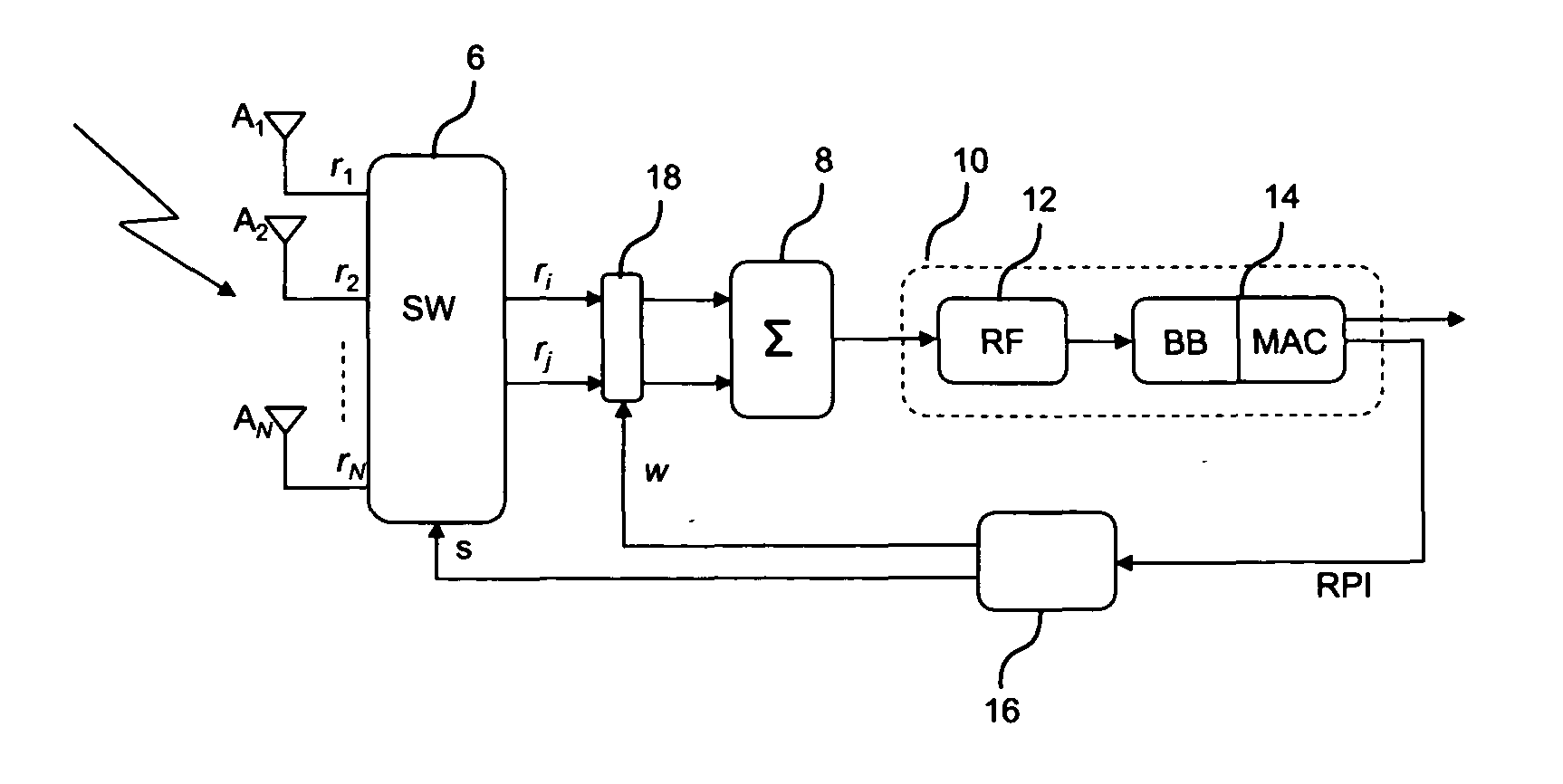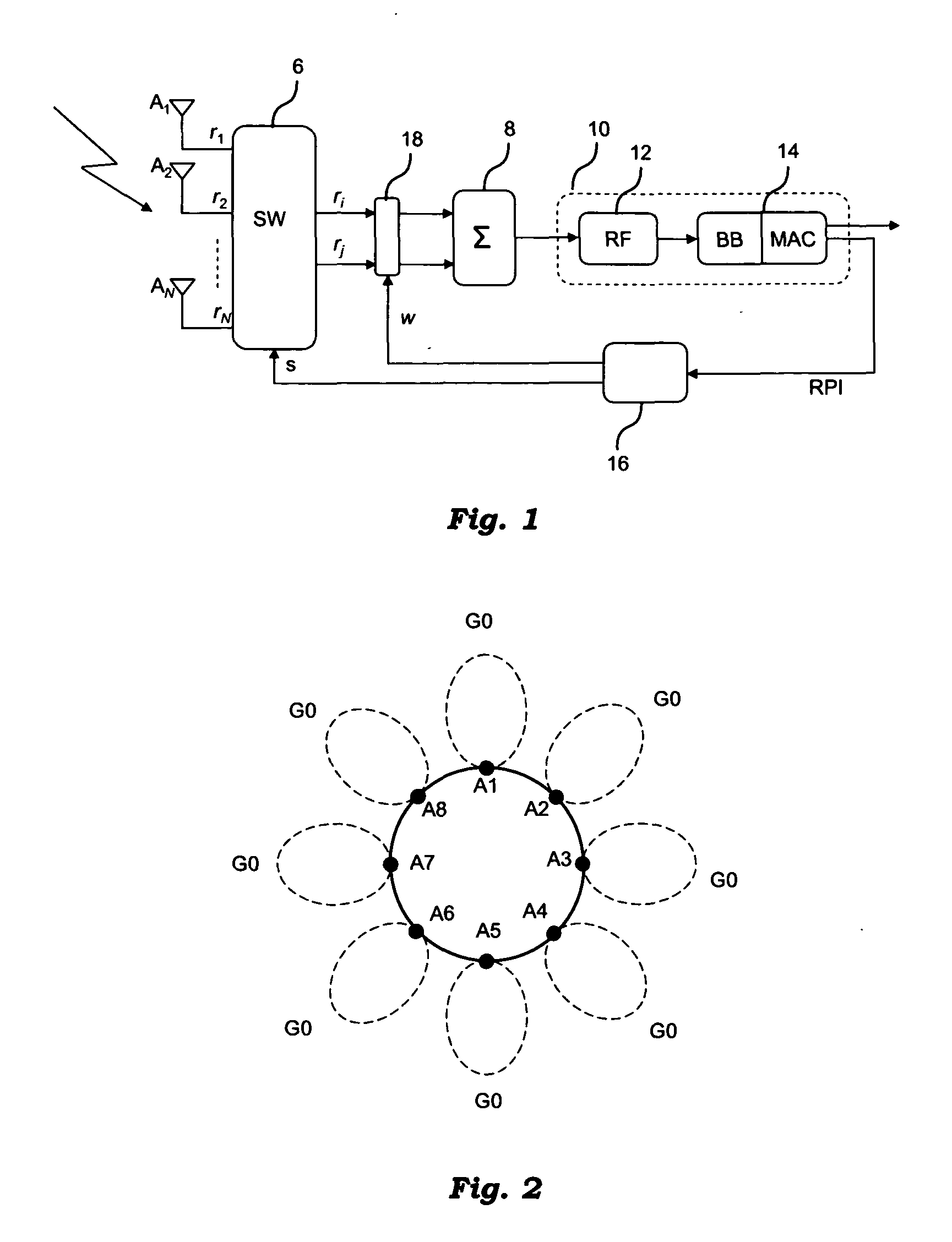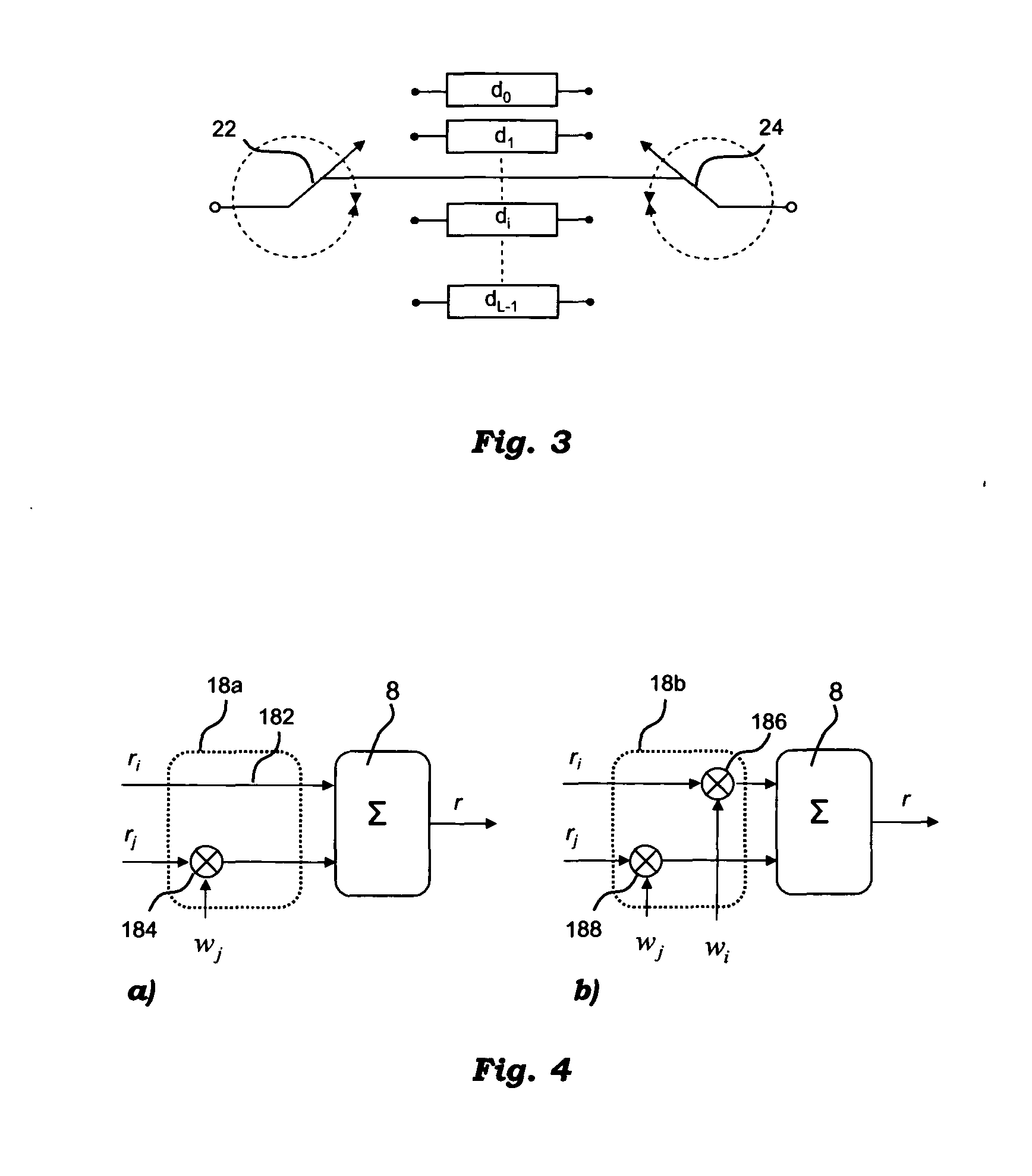Method and system for switched beam antenna communications
a technology of switched beam antennas and communication methods, applied in data switching networks, frequency-division multiplexes, instruments, etc., can solve problems such as loss of a part of the overall performance enhancemen
- Summary
- Abstract
- Description
- Claims
- Application Information
AI Technical Summary
Benefits of technology
Problems solved by technology
Method used
Image
Examples
first embodiment
[0072]With particular reference to a first embodiment, shown in FIG. 4a, which illustrates a first version of the RF phasing circuit 18 of the system of FIG. 1, when two signals ri and rj are selected after the switching network 6. Specifically, in the first version of the RF phasing circuit 18b, one of the two signals r, is maintained as it is and the other, rj is co-phased by a complex-valued weight wj with unitary modulus.
[0073]Specifically, this might be achieved by passing the signal ri directly to the combiner 8 over a line 182, and multiplying the signal rj with the weight wj in a RF multiplier 184.
[0074]The two signals are then recombined in block 8 and sent to the single RF processing chain 12 and demodulated through the modem 14 which carries out the BB and MAC receiving operations, as shown in FIG. 1.
[0075]An embodiment of the beam selection technique will be detailed in the following.
[0076]As a result of the beam selection step, an optimal beam selection signal S and wei...
second embodiment
[0083]With reference to a second embodiment, shown in FIG. 4b which illustrates a second version of the RF phasing circuit 18 of the system of FIG. 1, both signals ri and rj are weighted by the weights wi and wj respectively.
[0084]Specifically, this might be achieved by multiplying the signal ri with the weight wi in a first RF multiplier 186 and the signal rj with the weight wj in a second RF multiplier 188.
[0085]In this case the signal at the output of the co-phasing network 18b and combining network 8 can be expressed as follows
r=ri·wi+rj·wj
where the weighting factors can be expressed as complex phase shift weights
wi=exp(ja) wj32 exp(jβ)
and the signals at the output of the RF switching network can be expressed considering, for simplicity, only the phase term
ri=exp(jΘ1) ri=exp(jΘ2)
[0086]The combined signal is then expressed as follows
r=exp(jΘ1+a)+exp(jΘ2+β)
[0087]In order to coherently combine the two signals the following condition is fulfilled
Θ1+a=Θ2+β=>Θ1−Θ2=a−β
[0088]As the pha...
case 1
[0133] In this first case the equivalent radiation pattern of a single beam Ai or Bj with i=1,2,3,4 and j=1,2,3,4 can be obtained as the average value of the two radiation patterns obtained with the parameters indicated in the corresponding 2 lines of table 2. The average value has to be intended in the following way: the quality function QS obtained in correspondence of the equivalent radiation pattern of a single beam Ai or Bj can be computed as the average of the quality functions QS1 and QS2 measured in correspondence of the parameters indicated in the corresponding 2 lines of table 2.
TABLE 2First correspondence between the parameters (Ai,Bj),fk and the equivalent beams.EquivalentBeamBeam AiBeam BjPhase fkDOAA1A1B4φ = 270°353.8A1B1φ = 270°6.2°B1A1B1φ = 90°38.8°A2B1φ = 90°51.2A2A2B1φ = 270°83.8A2B2φ = 270°96.2B2A2B2φ = 90°128.8A3B2φ = 90°141.2A3A3B2φ = 270°173.8A3B3φ = 270°186.2B3A3B3φ = 90°218.8A4B3φ = 90°231.2A4A4B3φ = 270°263.8A4B4φ = 270°276.2B4A4B4φ = 90°308.8A1B4φ = 90°321....
PUM
 Login to View More
Login to View More Abstract
Description
Claims
Application Information
 Login to View More
Login to View More - R&D
- Intellectual Property
- Life Sciences
- Materials
- Tech Scout
- Unparalleled Data Quality
- Higher Quality Content
- 60% Fewer Hallucinations
Browse by: Latest US Patents, China's latest patents, Technical Efficacy Thesaurus, Application Domain, Technology Topic, Popular Technical Reports.
© 2025 PatSnap. All rights reserved.Legal|Privacy policy|Modern Slavery Act Transparency Statement|Sitemap|About US| Contact US: help@patsnap.com



